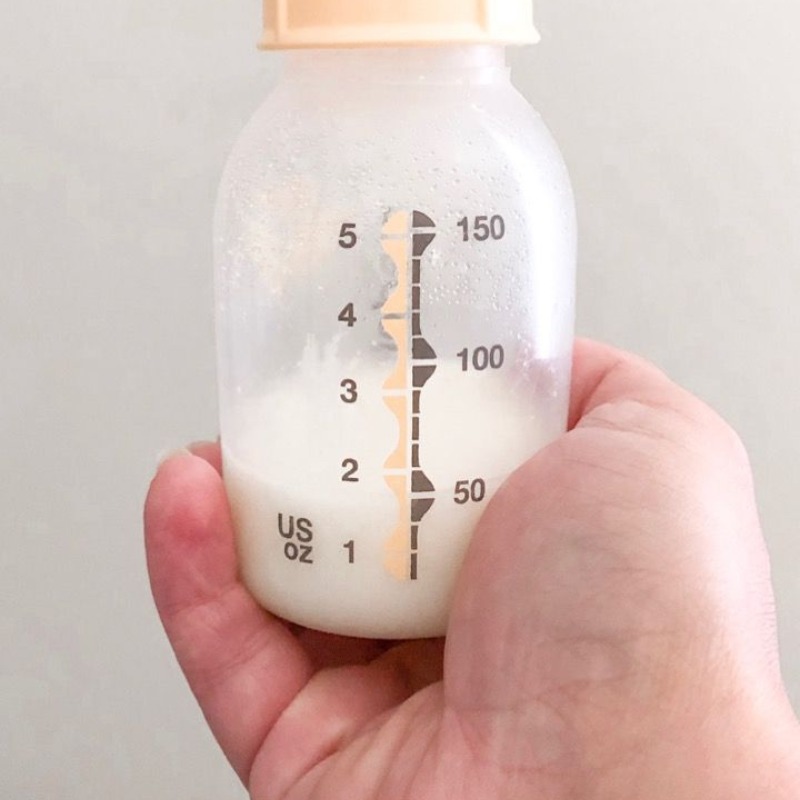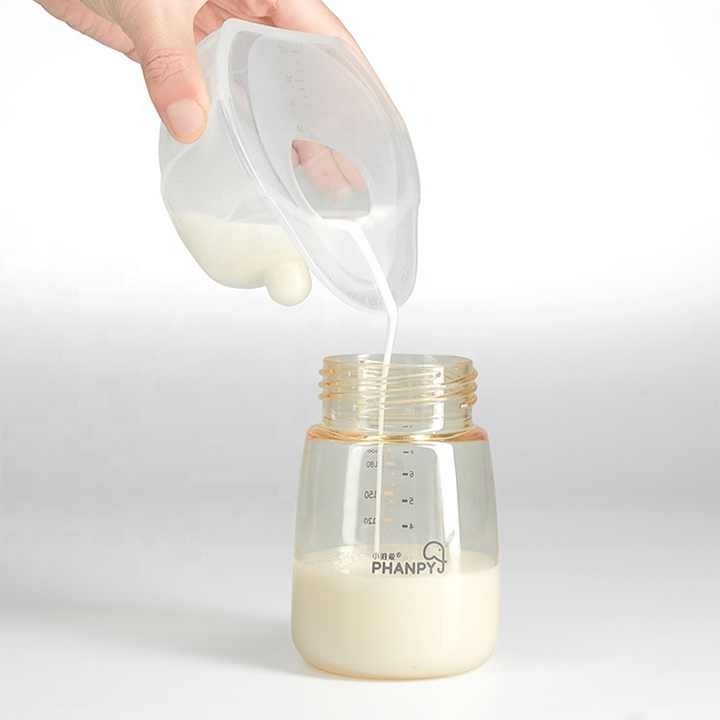Introduction to Breast Milk Color Variations
Many new mothers notice changes in the color of their breast milk. It can vary from a creamy yellow to a more transparent shade. Breast milk color is a topic of interest and importance for breastfeeding moms. It’s useful to understand why these variations occur. Mothers may wonder if the color reflects their baby’s health or if it signals a problem. Most changes, however, are normal and reflect many benign factors. The color of breast milk can give clues about a mother’s diet, hydration, and stage of lactation. Throughout this section, we will explore the common factors that influence breast milk color. We will provide information that can help mothers feel reassured about these natural variations. Remember, the ability of breast milk to change color is one of its fascinating qualities. It adapts to meet the nutritional needs of a growing baby. If you’re a breastfeeding mother, knowing about breast milk color can help you understand your body and your baby’s needs better.
Factors That Influence Breast Milk Color
The color of breast milk can change due to various factors. Understanding these can help mothers know what to expect.
Maternal Diet and Its Impact on Milk Color
What a mother eats can affect the hue of her milk. Foods rich in color, like carrots or spinach, might tint milk yellow or green. Even beverages like beet juice can change milk to pink. Mothers should note what they eat to understand color changes.
Stage of Lactation: Colostrum to Mature Milk Transition
Breast milk color also changes with lactation stages. Early milk, called colostrum, is often a golden yellow. This is due to its high nutrient content. As milk transitions to a more mature state, the color usually lightens. This shift is normal and reflects a change in the milk’s composition to suit the baby’s growth.
Common Breast Milk Colors Explained

Mothers often notice breast milk color varies. Understanding these colors can help mothers feel more at ease.
Yellow and Orange Tinged Milk
Yellow and orange shades in breast milk are common. This often happens when a mother includes foods like carrots or sweet potatoes in her diet. These foods have natural pigments that may color the milk. This coloration is harmless and is a visual sign of the varied diet a mother consumes.
Blue or Clear-Like Milk
At times, breast milk may appear bluish or almost clear. This is typical for the ‘foremilk’, the milk that comes out at the start of a feed. It’s thinner and may look blue due to its lower fat content compared to ‘hindmilk’. Being well hydrated also makes the milk lighter. There’s no need for concern as it provides essential hydration for the baby.
Greenish Hue in Breast Milk
A green tint to breast milk is less common but can occur. Eating lots of green vegetables, such as spinach or seaweed, can cause this. The greenish hue reflects the mother’s intake of chlorophyll-rich foods. As with other color changes, this variation is natural and not a sign of a problem.
When to Be Concerned: Warning Signs in Milk Color
While many breast milk color changes are normal, some can be warning signs. It’s important to identify any colors that might indicate an issue.
Pink, Red, or Brown Milk: Causes and Actions
If breast milk looks pink, red, or brown, it could be a cause for concern. These colors might mean blood is present. This can happen if there are cracked nipples or other breast issues. It’s key to see a health professional if you notice these colors. They can help identify the cause and give the right advice.
True Color Changes vs. Foremilk and Hindmilk Differences
Not all color changes mean there’s a problem. Sometimes, it’s just the difference between foremilk and hindmilk. Foremilk is the milk at the start of a feed. It can look lighter. Hindmilk comes later in the feed and is richer and creamier. It’s important to learn the difference, so you don’t worry unnecessarily about color changes.
How Medications and Supplements Can Affect Milk Color

Breastfeeding mothers may be surprised to learn that their medications and supplements can also affect the color of their breast milk. Certain medications, vitamins, and herbal supplements have pigments or components that can pass into breast milk, influencing its hue. While this is generally not a concern for the baby’s health, it can sometimes startle mothers.
- Vitamin Supplements: Vitamins, such as B-complex, can turn breast milk slightly greenish due to the riboflavin content.
- Iron Supplements: Iron can cause a slight brownish color change in breast milk.
- Medications: Some prescription drugs, if safe for breastfeeding, might also alter milk color. For example, some forms of antibiotics can cause a yellowish tint.
It’s always wise to consult with a healthcare provider about the safety and potential side effects, including changes in breast milk color, of any medication or supplement taken while breastfeeding. If noticeable changes occur, this could be a helpful conversation to have to ensure everything is normal and safe. That said, it is crucial to never stop or modify prescribed medication without professional guidance. Understanding that these changes are typically harmless can help to reduce any unnecessary worry about breast milk color variations due to medications or supplements.
Practical Tips for Monitoring Breast Milk Color
As a breastfeeding mother, keeping an eye on the color of your breast milk is useful. Watching for changes can give you a sense of what’s normal for you and your baby. Here are some practical tips to help you monitor the color of your breast milk effectively:
- Keep a Food Diary: Note the foods and drinks you consume. This can help link diet to milk color changes.
- Observe During Feeding: Watch the color of the milk at different feeding times. You’ll notice foremilk is usually lighter than hindmilk.
- Stay Hydrated: Good hydration can affect the lightness of breast milk. Drink plenty of water to maintain clarity in your milk.
- Consult Healthcare Providers: Any sudden or concerning changes should prompt a visit to your health professional.
- Use Proper Lighting: Examine milk color in natural light for the most accurate representation.
- Record Medications and Supplements: Jot down any new medicines or supplements you’re taking, as they may influence milk hue.
- Know Your Breast Pump: Sometimes, the pump can cause milk to mix with trace amounts of blood, affecting color.
It’s important to remember that most color variations in breast milk are typical and often relate to benign factors. However, if you ever feel unsure or worried about the color, don’t hesitate to reach out to your healthcare provider. Tracking breast milk color along with other behaviors and inputs can be an empowering way to understand your body’s responses and ensure the best for your baby’s nutrition. Always prioritize professional advice over self-diagnosis when it comes to health concerns.
When to Seek Medical Advice

While many color variations in breast milk are normal, certain signs indicate the need for medical consultation. Being informed helps mothers take timely action when necessary.
- Persistent Unusual Colors: If breast milk consistently appears green, pink, or blue without a clear dietary or environmental cause, seeking medical advice is recommended to rule out underlying issues.
- Signs of Infection or Illness: Red or pink milk accompanied by symptoms like nipple pain, swelling, or fever may indicate an infection such as mastitis, requiring prompt medical attention.
- Baby’s Reaction: If the baby shows signs of discomfort, such as excessive fussiness, rashes, or digestive issues, it may be related to changes in breast milk. Consulting a pediatrician can help determine the cause.
- Concerns About Dietary Impact: Mothers unsure if their diet is affecting it should seek guidance from a healthcare professional or a lactation consultant to ensure proper nutrition and milk quality.
Understanding it is a vital aspect of the breastfeeding journey. By recognizing natural variations, interpreting unusual changes, and knowing when to seek help, mothers can confidently provide the best nutrition for their babies. Embracing these insights fosters a positive and informed breastfeeding experience, promoting the health and happiness of both mother and child.